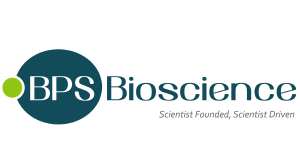Estrogen Luciferase Reporter T47D Cell Line
Estrogen Luciferase Reporter T47D Cell Line
SKU
BPS82349
Packaging Unit
2 vials
Manufacturer
BPS Bioscience
Availability:
loading...
Price is loading...
Products from BPS Bioscience require a minimum order value above 400€
Application: Screen and characterize modulators of the estrogen receptor signaling pathway.Evaluate the efficacy of potential drug candidates for ER-directed therapies.
Background: ER (estrogen receptor) exists as two nuclear ER isoforms (ERα and ERβ) and a membrane associated ER (GPER1) one and responds to estrogen. Estrogen is a hormone produced mainly in the ovaries, but also in the adipose tissue, and plays a role in reproduction, bone density, inflammation, and others. Estrogen can penetrate the cell membrane and bind to ERα, which dimerizes and translocates to the nucleus, where it associates with transcriptional co-activators and binds to ERE (estrogen responsive elements). In addition to this genomic role, ER also plays non genomic roles by directly activating cellular signaling pathways. About 60% of breast cancer (BC) cases are ERα-positive and are classified as luminal BC. Patients with luminal BC have several therapeutic strategies available to them: hormone therapy, SERM (selective estrogen receptor modulators), AI (aromatase inhibitors), SERD (selective estrogen receptor degraders) and LHRH (luteinizing hormone-releasing hormone). However, about half of the metastatic therapy-resistant BC result from ERα mutations, with at least 62 being known. New therapeutic avenues are thus needed for the successful treatment of this BC patient population.
Description: Estrogen Luciferase Reporter T47D Cell Line is a human breast cancer, ERα (estrogen receptor alpha)-positive luminal A cell line, with a stably integrated Firefly luciferase reporter under the control of an estrogen response element (ERE). This cell line monitors the activity of the ER signaling pathway.This cell line has been validated in cellular assays involving the inhibition of 17β-Estradiol-induced reporter activation by ER antagonists such as Vepdegestrant (ARV-471), Elacestrant (RAD1901), and Fulvestrant.
Host Cell Line: T47D, human breast carcinoma epithelial cell line, adherent
Mycoplasma Testing: The cell line has been screened to confirm the absence of Mycoplasma species. Purchase of this cell line is for research purposes only; commercial use requires a separate license. View the full terms and conditions at bpsbioscience.com/license
Storage Stability: Cells are shipped in dry ice and should immediately be thawed or stored in liquid nitrogen upon receipt.
Supplied As: Each vial contains >1 x 106 cells in 1 ml of Cell Freezing Medium (BPS Bioscience #79796)
Uniprot: P03372
Warnings: Do not use a -80°C freezer for long term storage.
Biosafety Level: BSL-1
References: Juliette L., et al., 1999 Toxicological Sciences 48: 55-66.Yu S., et al., 2017 Biochemical and Biophysical Research Communications 486(3): 752-758.Clusan L., et al., 2023 Int J Mol Sci 24(7): 6834.
Application: Screen and characterize modulators of the estrogen receptor signaling pathway.Evaluate the efficacy of potential drug candidates for ER-directed therapies.
Background: ER (estrogen receptor) exists as two nuclear ER isoforms (ERα and ERβ) and a membrane associated ER (GPER1) one and responds to estrogen. Estrogen is a hormone produced mainly in the ovaries, but also in the adipose tissue, and plays a role in reproduction, bone density, inflammation, and others. Estrogen can penetrate the cell membrane and bind to ERα, which dimerizes and translocates to the nucleus, where it associates with transcriptional co-activators and binds to ERE (estrogen responsive elements). In addition to this genomic role, ER also plays non genomic roles by directly activating cellular signaling pathways. About 60% of breast cancer (BC) cases are ERα-positive and are classified as luminal BC. Patients with luminal BC have several therapeutic strategies available to them: hormone therapy, SERM (selective estrogen receptor modulators), AI (aromatase inhibitors), SERD (selective estrogen receptor degraders) and LHRH (luteinizing hormone-releasing hormone). However, about half of the metastatic therapy-resistant BC result from ERα mutations, with at least 62 being known. New therapeutic avenues are thus needed for the successful treatment of this BC patient population.
Description: Estrogen Luciferase Reporter T47D Cell Line is a human breast cancer, ERα (estrogen receptor alpha)-positive luminal A cell line, with a stably integrated Firefly luciferase reporter under the control of an estrogen response element (ERE). This cell line monitors the activity of the ER signaling pathway.This cell line has been validated in cellular assays involving the inhibition of 17β-Estradiol-induced reporter activation by ER antagonists such as Vepdegestrant (ARV-471), Elacestrant (RAD1901), and Fulvestrant.
Host Cell Line: T47D, human breast carcinoma epithelial cell line, adherent
Mycoplasma Testing: The cell line has been screened to confirm the absence of Mycoplasma species. Purchase of this cell line is for research purposes only; commercial use requires a separate license. View the full terms and conditions at bpsbioscience.com/license
Storage Stability: Cells are shipped in dry ice and should immediately be thawed or stored in liquid nitrogen upon receipt.
Supplied As: Each vial contains >1 x 106 cells in 1 ml of Cell Freezing Medium (BPS Bioscience #79796)
Uniprot: P03372
Warnings: Do not use a -80°C freezer for long term storage.
Biosafety Level: BSL-1
References: Juliette L., et al., 1999 Toxicological Sciences 48: 55-66.Yu S., et al., 2017 Biochemical and Biophysical Research Communications 486(3): 752-758.Clusan L., et al., 2023 Int J Mol Sci 24(7): 6834.
| SKU | BPS82349 |
|---|---|
| Manufacturer | BPS Bioscience |
| Manufacturer SKU | 82349 |
| Package Unit | 2 vials |
| Quantity Unit | PAK |
| Product information (PDF) |
|
| MSDS (PDF) |
|

 Deutsch
Deutsch






